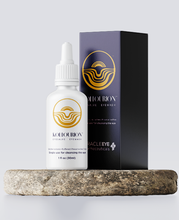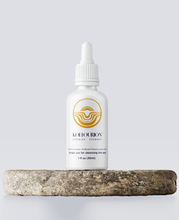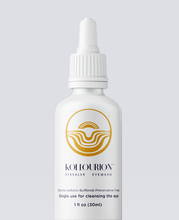
Physical Vision
How do you see your eyes? Our eyes are windows to the gift of sight. How do your eyes look and feel?

Mental Vision
How do you see yourself? How is your mental vision? How do others see you? Does what they think even matter?

Spiritual Vision
Can you see God’s footprints and fingerprints in life? Have you asked God why God created you and what God’s purpose is for you in life?
It Would Be Wise To Bath Thine Eyes.
Whether you are the Queen of Sheba or the Queen of Beauty, Kollourion Eyesalve™ is good for your body! Whether you are King Solomon or King of Sorrows, Kollurion Eyeslave™ is good for your soul and spirit! (cf Rev. 3:18).
Our Eyesalve Is Made Using The Highest Possible Human Quality.
Kollourion Is Always:
1. Preservative Free
2. Sterile Isotonic Buffered
3. Includes Ethiopian Holy Water
4. Gamma-Ray Terminal Sterilization
5. Kosher Certified


Preservative Free
The most widely used chemical preservative used in eye drops is Benzalkonium Chloride (BAK). There is a large body of evidence from both experimental and clinical studies showing that long-term use of ophthalmic solutions containing BAK is harmful to the eye (i.e., may induce ocular surface changes causing ocular discomfort, tear film instability, conjunctival inflammation, subconjunctival fibrosis, epithelial apoptosis, corneal surface impairment, and the potential risk of glaucoma treatment failure).
Sterile Treatment
Sterility can be defined as the absence of microbial contamination. All preparations intended for use in the eye must absolutely be sterile.
Using eye drops contaminated with any disease-causing organisms or pathogens like bacteria, fungi, protozoa, or viruses can lead to serious infection of the eye and blindness. Also, note that the eye is not only close to the brain, but is an extension of your brain.
Isotonic Treatment
Solutions that are Isotonic (iso-osmotic) are solutions that have the same salt concentration as living cells. This is to ensure that the solution does not damage tissue when administered. Solutions That contain a low salt concentration are called hypotonic and those with higher salt concentrations are referred to as hypertonic.
Hypotonic solutions produce painful swelling and cell rupture from water being drawn into the cells. Hypertonic solutions produce painful shrinking of tissues from water being pulled from the biological cells to dilute the hypertonic solution.
Buffered Treatment
The physiologic pH of tears is approximately 7.4. From a comfort and safety standpoint, this would be the optimal pH of ophthalmic solutions. The range to prevent corneal damage is 6.5 to 8.5. Buffered refers to the mechanism for adjusting and maintaining the pH of the solution.














